 The snow-covered lands of the Arctic have long been home to the Inuit and Yupik people, two remarkable indigenous groups who have thrived in one of the world’s harshest environments.
The snow-covered lands of the Arctic have long been home to the Inuit and Yupik people, two remarkable indigenous groups who have thrived in one of the world’s harshest environments.
Among their many ingenious inventions, the humble snow goggles stand out as a fascinating example of human adaptability and innovation.
These specialized eyewear, worn for centuries by the Inuit and Yupik, have not only protected their eyes from the blinding glare of snow but also offer a window into the rich cultural heritage of these remarkable communities.
The Arctic region, with its icy tundra and vast stretches of snow, presented significant challenges to Alaska’s indigenous people.
With limited vegetation and abundant ice and snow, the sun’s reflection posed a constant threat to the eyes, potentially causing temporary or even permanent blindness.
 The Inuit and Yupik recognized the need to adapt to their environment, and so, the snow goggles were born.
The Inuit and Yupik recognized the need to adapt to their environment, and so, the snow goggles were born.
Carved from materials available in the region, such as wood, bone, ivory, or antler, these goggles were designed with precision to offer optimal protection against the glaring snow.
Their invention not only showcased the ingenuity of these communities but also demonstrated their profound understanding of their surroundings and their ability to craft solutions from the natural world.

Photograph by Archibald Fleming of an Inuit man wearing wooden snow goggles with slits for eye protection.
The goggles are traditionally made of driftwood (especially spruce), bone, walrus ivory, caribou antler, or in some cases seashore grass.
The workpiece is carved to fit the wearer’s face, and one or more narrow horizontal slits are carved through the front.
The goggles fit tightly against the face so that the only light entering is through the slits, and soot is sometimes applied to the inside to help cut down on glare.
The slits are made narrow not only to reduce the amount of light entering but also to improve the visual acuity. Wider slits result in a larger field of view.

The curved shape of the snow goggles not only aided in providing an unobstructed field of vision but also prevented the buildup of condensation from breath and body heat.
Additionally, the materials used to construct these goggles proved to be ideal, as they did not freeze easily and remained durable even in extreme conditions.
The snow goggles have been found in Inuit archeological sites up to 2,000 years old.
Like other Inuit language words, such as inukhuk/inuksuk, a different word may be used in different dialects. In the Kivalliq dialect, ilgaak is used, while the North Baffin dialect uses iggaak. Both words are also used to refer to sunglasses.
In Central Yupik, snow goggles are called nigaugek, while in Cup’ig they are igguag. In Siberian Yupik, the word is iyegaatek.
 Beyond their practical function, snow goggles hold immense cultural significance for the Inuit and Yupik communities.
Beyond their practical function, snow goggles hold immense cultural significance for the Inuit and Yupik communities.
They were not just a piece of eyewear but rather a testament to the resilience and resourcefulness of their people.
The craft of creating snow goggles was passed down from generation to generation, bonding families and communities together through shared knowledge and skills.
Moreover, these goggles were often adorned with intricate carvings and designs, serving as a medium for artistic expression.
Each pair of goggles told a unique story, reflecting the beliefs, myths, and experiences of the individual wearer.
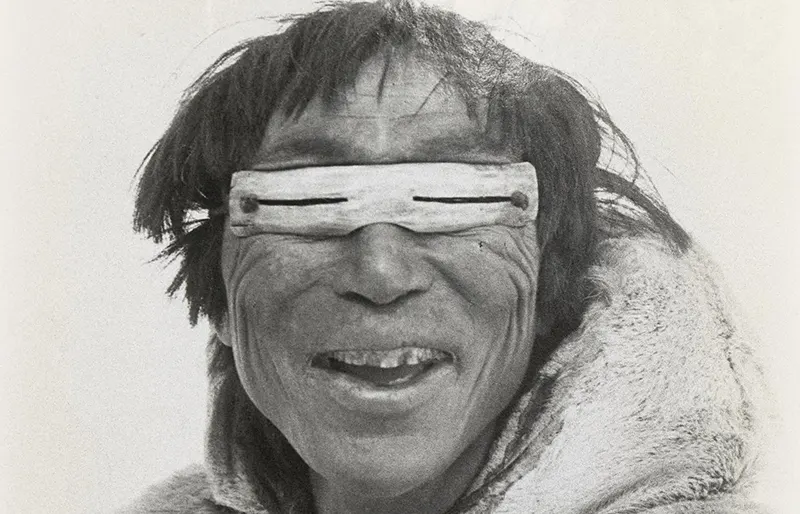 The practicality and efficacy of snow goggles did not go unnoticed by explorers and visitors to the Arctic.
The practicality and efficacy of snow goggles did not go unnoticed by explorers and visitors to the Arctic.
As early as the 18th century, European travelers, traders, and anthropologists began to document the use of these goggles in their accounts of Arctic expeditions.
Over time, the knowledge of these ingenious snow goggles spread beyond the Arctic region. Their functional brilliance and unique design captured the curiosity of the wider world, leading to their eventual adoption in various other snowbound areas globally.
The legacy of the Inuit and Yupik people’s innovation thus reached far beyond their own communities, shaping the ways in which other cultures addressed the challenges posed by snowy environments.

Inupiaq snow goggles made from ivory. Created 1880-1900.
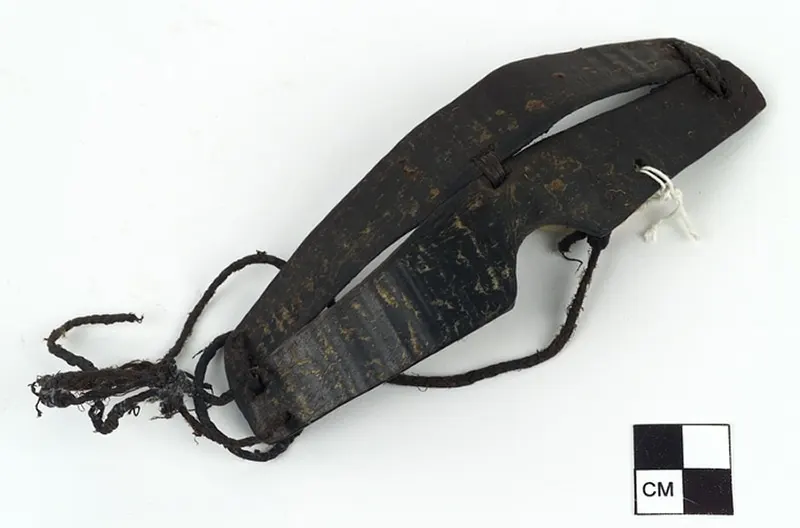
nupiaq snow goggles made from baleen and sinew. Created c. 1890.
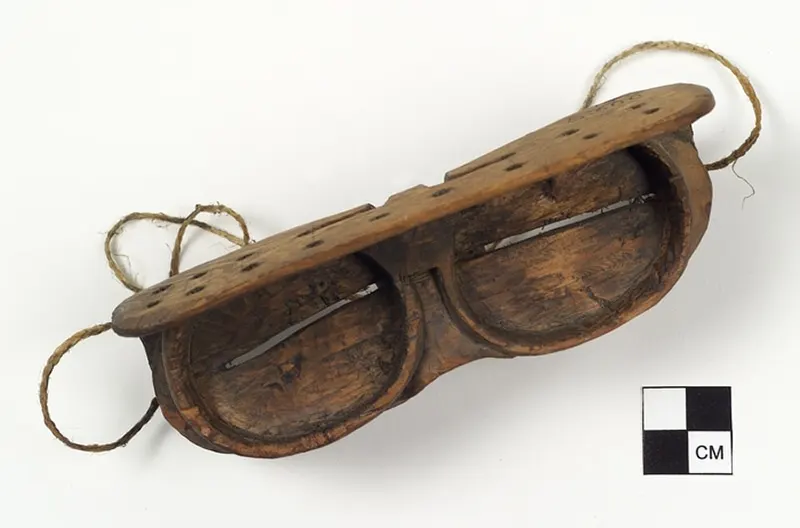
Baffinland Inuit snow goggles made from wood. Created c. 1920.

Inupiaq snow goggles made from caribou hoofs, sealskin, sinew. Created 1961.
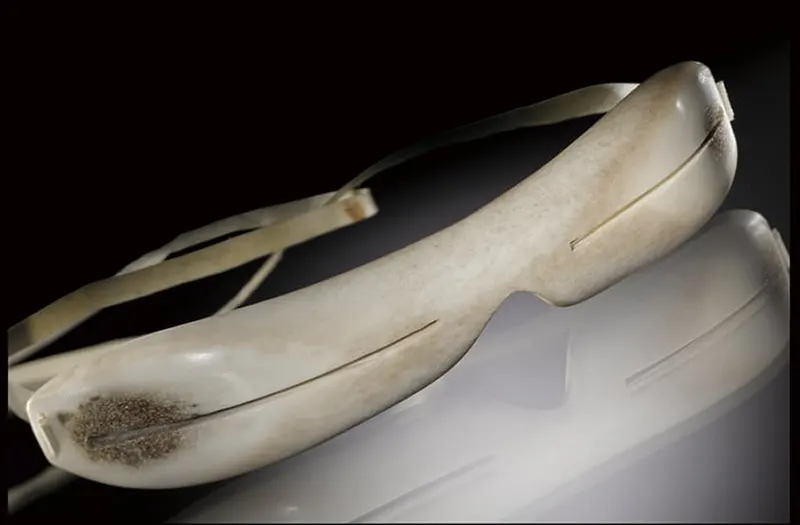
Inuit snow goggles made from caribou bone.

Contemporary snow goggles made from plastic. Created 1970-1990.
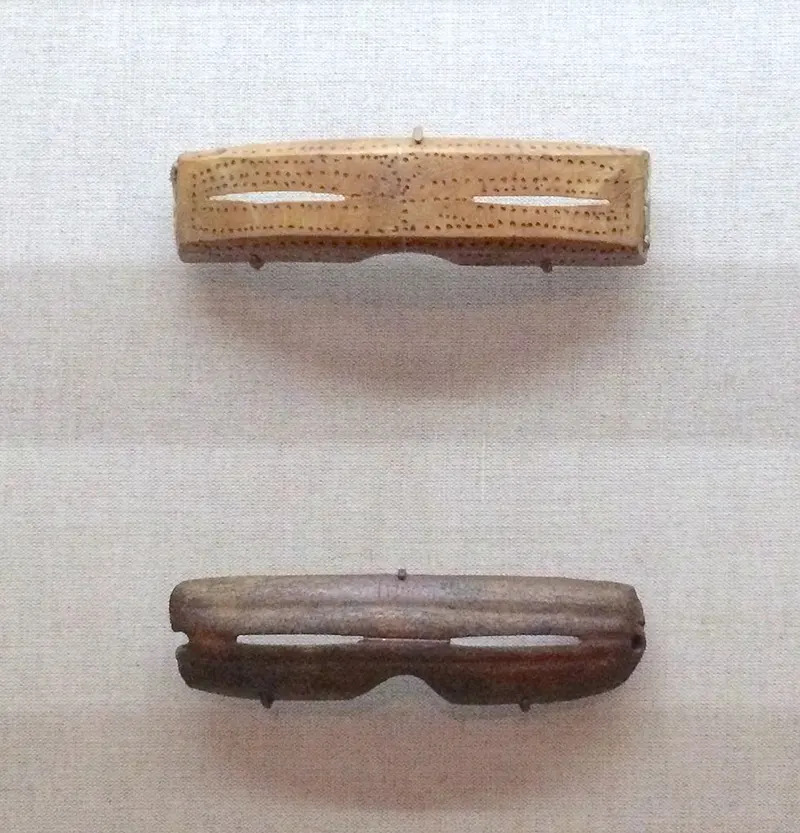
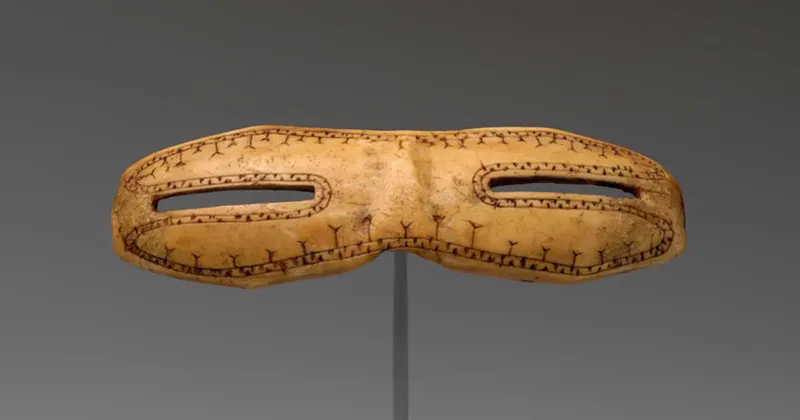
(Photo credit: National Museum of the American Indian / Wikimedia Commons / Library of Congress).